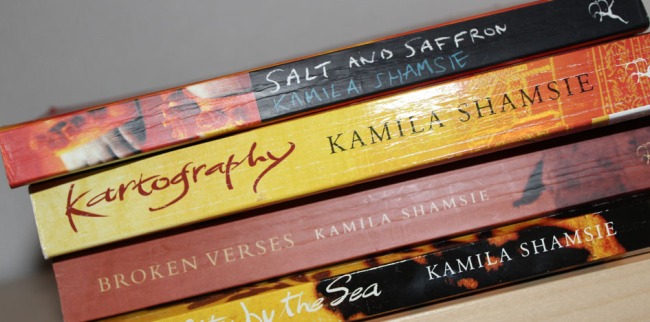I have just finished two books. I came back from Delhi in the middle of February and when I did my packing, collecting all the books I had bought, I squirmed… One, two, three and many more. I let one go in my hand luggage, the rest in my suitcase.
I picked up Mirror City by Chitrita Banerji at Bharison’s Booksellers, quite a famous book seller at Khan Market. And a good place for bookaholics. I knew I had read about the book somewhere, and that it most likely was on my to-buy list in my notebook. Having finished Mirror City a few weeks after I came home, Jumpa Lahiri’s latest novel, The Lowland, was next in the pile. I bought it at The Delhi World Book Fair; a very intense experience. The grounds were enormous, the halls likewise, crowds, heat, confusion… I picked up Lahiri, a few more and fled…
Now that I have read these two books I realise that I wanted to finish both books fast, but because of different reasons.
Mirror City is set in Bangladesh just after independence. The cover summarises the book in words like “the turbulent early days of Bangladesh”, “the slow breakdown of a marriage”, “a woman’s search to find herself”. I should have read it like a warning, still, novels set in Bangladesh are hard to come by and I bought it because of that. After a few pages I knew I’d label the book as simple. An easy read, rather shallow… Very easy language, one-dimensional characters. Still I read on, just out of curiosity because I wanted to know who Uma fell in love with, if Nasreen really was a traitor and – having swallowed even more pages… if Uma would leave her husband and escape with her lover. I wanted to finish the book fast, because in a sense I felt that I was wasting my time.
And then I moved on to Jhumpa Lahiri’s Lowland. After 50 pages I was hooked, the story seemed promising, but most important; the language was music to my ears compared with Mirror City. As a “foreigner”, meaning that English is not my mother tongue, I’m sensitive to language. A few years back I picked up Midnight’s Children by Salman Rushdie. I wasn’t able to turn the first page, I read the first few paragraphs again and again and I hardly understood a word. It might as well have been Urdu. Defeated, I searched my book shelves and found a Norwegian edition. It was a relief though, to realise that Rushdie can be rather unattainable also in your own language, he writes long and complicated sentences. Concentration is a part of The Rushdie Reading Experience…
I experienced almost the same a while ago, while reading Neel Mukherjees The lives of others. I enjoyed the story, but more than that, he writes in a very sophisticated language – I must admit I had to concentrate as well as enjoy….but I never gave it up!
Whereas Mirror City tells the story from Uma’s view and within a restricted time span, The Lowland moves back and forth in time and follows the main character almost from the day he is born until he is a man in his 70s. Moreover, the story is told from all the three main characters points of view. Which makes the story even more interesting.
I knew from the very start that I would like the book to last. That I’d get a book hangover after the last chapter. Still, I couldn’t stop reading, I wanted to finish the book because I wanted so badly to see how the character’s lives unfolded. I read before going to work in the morning, after dinner (which in Norway can be as early as 4.30…), when I was watching the news, in bed – at length… And now it’s over…





























